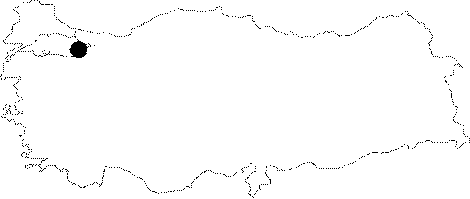|
©The Archaeological Settlements of Turkey - TAY Project
|
|
|
|
|
|
Yalova / Göztepe |
|
|
For site maps and drawings please click on the picture...  |
For photographs please click on the photo...  |
|
Type:
|
Flat Settlement |
|
Altitude:
|
40 m |
|
Region:
|
Marmara |
|
Province:
|
Yalova |
|
District:
|
Merkez |
|
Village:
|
Samanli |
|
Investigation Method:
|
Excavation |
|
Period:
|
Ceramic |
|
|
|
 |
|
| Location: This site lies 3 km west of the city of Yalova; approximately 1 km north of the village of Samanli; on the east-northeastern extension of the Baltaçiftligi natural outcrop. |
| Geography and Environment: The site is 800 m from the Marmara Sea. Ceramic fragments were found on the field in the east-southeastern part of Göztepe; a sand dune. The site has been destroyed by sand extraction and the construction of water canals. The inhabitants of this site must have used Samanli Stream; east of Göztepe; for water. |
| History: |
| Research and Excavation: This site; now no longer existent; yielded a scatter of pottery. The east-northeast part of the mound was used as a cemetery in antiquity. Burial excavations were conducted in 1952 under the direction of R. Duyuran. The 2x2 m western extension of the trench opened in the cemetery yielded burnt patches; burnt plaster and some ceramics. These finds are now in the Istanbul Archaeological Museum. |
| Stratigraphy: |
| Small Finds: Pottery: The ceramics collected during the surface survey are similar to the Fikirtepe and Pendik-Temenye finds. Some of the pottery may be confused with the sand-tempered Fikirtepe wares. Open vessels; flaring lips; wide mouthed high forms [Firatli 1953a:fig.22]; closed vessels; neckless short vessels and vessels with pierced lugs have been found. |
| Remains: |
| Interpretation and Dating: The surface of the site yielded pottery that in some ways resembles Fikirtepe ware. The site is believed to be a Late Neolithic site; contemporaneous with the site of Fikirtepe. Özdogan; however; notes that there are pre-Fikirtepe type wares at this site as well [Özdogan 1979:234]. The burnt plaster fragments are believed to be remnants of wattle and daub type houses. |